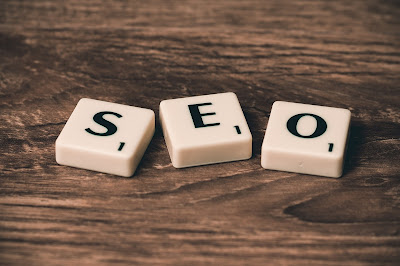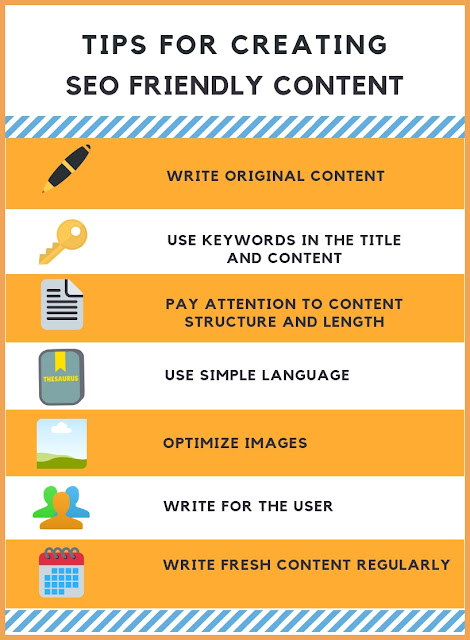 Good, high-quality content is an important part of Digital Marketing. When writing online, it is important to make
your content SEO-friendly. Content that is optimized boosts your search engine
rankings and attracts visitors to your website, which is the ultimate goal of
your content efforts.
Good, high-quality content is an important part of Digital Marketing. When writing online, it is important to make
your content SEO-friendly. Content that is optimized boosts your search engine
rankings and attracts visitors to your website, which is the ultimate goal of
your content efforts.Here are some tips to create SEO-friendly content that search engines will love.
Write original content
Write high-quality and original content on topics that you
know about or have knowledge of. Since it is not possible to have expert
knowledge of every topic, you can seek inspiration and ideas from other sources.
Your content will stand out and be a
valuable source of information when you present your ideas and views on the
topic in your own unique way. Copying content, i.e. plagiarism is not viewed
favorably by search engines and can lead to penalization and black-listing.
Use Keywords in the Title and Content
The title of your post is very important because it tells
search engines what the content is about. A vague title can be misleading for
both search engines and users. Using keywords in the title can boost your rankings,
as is using keywords in the body of the post.
However, it is important not to overdo keyword usage. Keyword stuffing
refers to indiscriminate use of keywords in content to rank high. Search
engines penalize such websites. Keywords should be used naturally in the
content, and in context.
Pay Attention to Content Structure and Length
You may have written a scholarly, 2000-word article but if
it is poorly structured, your rankings will get a hit. Along with good content,
good structure is also important. An article or write-up should have well-defined
headers (H1 to H6), concise paragraphs and a good readable font.
You should
also be consistent with the styles you apply. If you are using a H2 header tag
for subheadings, ensure the same tag is used throughout. If you use H2 for
some, and H3 for the rest, it can confuse search engines and make for a poor
reading experience.
Search engines crawl header tags to understand the gist of
your content. A well-structured article helps with SEO and user experience.
Use Simple Language
It goes without saying that users are drawn to content that is
easy to understand. Using complex words can put off users and make them lose
interest in your content. Writing content in the language your audience speaks and
understands will keep them engaged and entertained.
Optimize Your Images
Image optimization is very important from a search engine perspective.
Search engines can crawl text, but not images. Images can be optimized by
having a relevant file name instead of something vague (Ex: sunflower.jpg
instead of 123.jpg), using images that are good quality but not too large (affects
page loading) and adding a title or alt text (to display to the user when the image
fails to load).
The purpose of image optimization is to rank in the image
search results of search engines, which is good for SEO.
Write for the User
The content you create should always be written with the user in mind. The purpose of writing content is to engage, inform and help your audience. Hence, it is important to know what your audience expects from you and what content they would like to read.Optimizing content with keywords and content that your audience seeks helps with SEO as well as user experience. Search engines reward sites with content offerings that enhance user experience.
Write Fresh Content Regularly
Writing content on a consistent basis keeps your audience engaged and helps with better ranking. Search engines are always scouting for fresh content and reward sites that post such content. The more regularly you post content, the more your website or blog gets crawled & indexed which can help with your SEO goals. A content calendar will help you plan and stay organized with your content publishing tasks.
To cap it all,

After going through this post, I realized that taking help of a good facebook ads management is going to be beneficial in long run. A business needs to be promoted like this and it is very important to opt for online marketing in today’s time.
ReplyDeleteThat is such a brilliant write up Rita. I was just about to publish my very first blog but I decided to glean through your article and It dawned upon me that I forgot to check upon certain things. Thank you so much
ReplyDelete